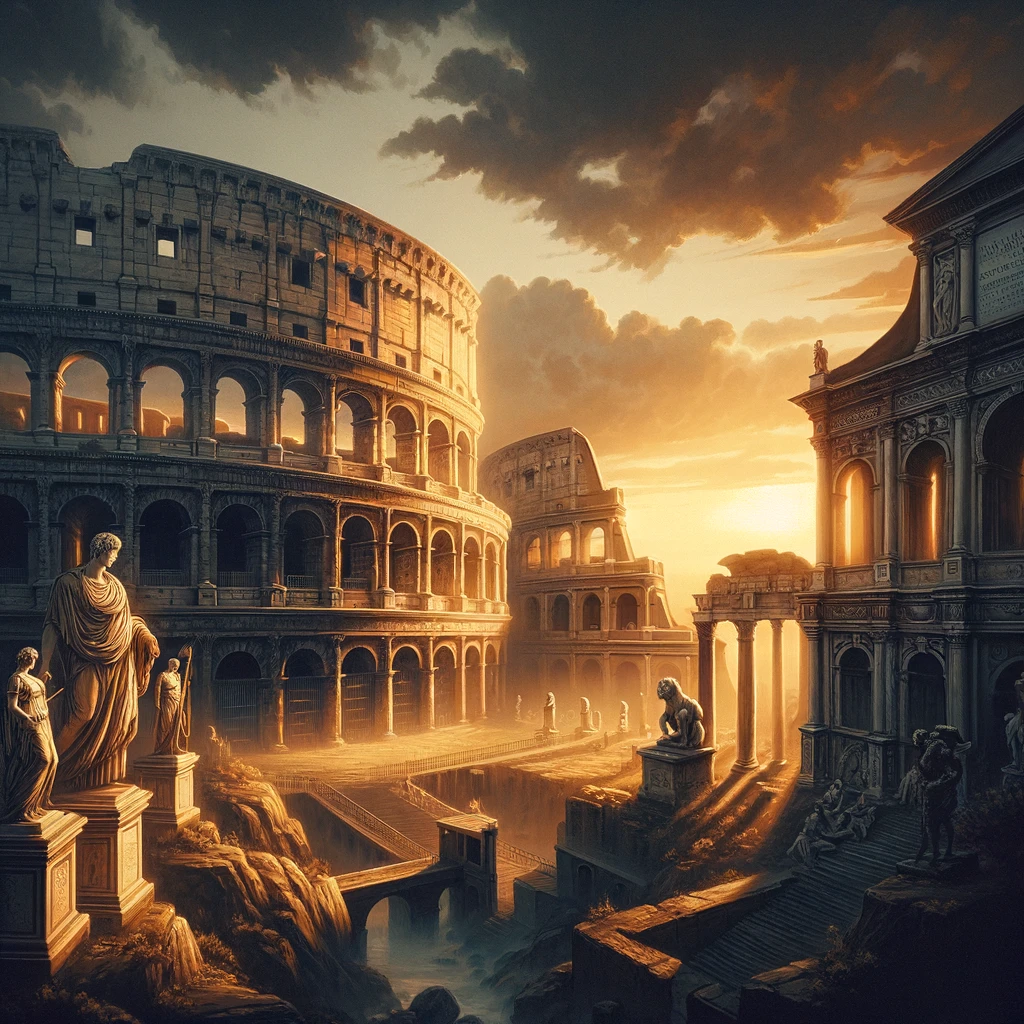
Nero Claudius Caesar Augustus Germanicus, the fifth Roman Emperor, ruling from AD 54 to 68, is one of history’s most intriguing figures. His reign is often associated with tyranny, extravagance, and the Great Fire of Rome. However, Nero’s story is also marked by artistic ambition and significant public works. Here are 15 interesting facts about Nero that provide insight into his complex character and tumultuous rule.
Early Ascension to Power
Nero became emperor at the tender age of 16, the youngest Roman emperor until that time. His rise was orchestrated by his mother, Agrippina the Younger, who married her uncle, Emperor Claudius, and persuaded him to adopt Nero and name him as his successor over his own son, Britannicus.
An Artistic Soul
Despite his notorious reputation, Nero was passionate about the arts. He fancied himself a poet, musician, and actor, often performing for the public, which was scandalous for a Roman Emperor. Nero’s performances were not optional; senators and dignitaries were compelled to attend and express their admiration.
The Great Fire of Rome
In AD 64, a catastrophic fire ravaged Rome, destroying much of the city. Rumors suggested Nero played the lyre as Rome burned, though these accounts are disputed. Some historians suggest Nero was not in Rome when the fire started and returned to organize relief efforts.
Nero’s Golden House (Domus Aurea)
After the fire, Nero seized the opportunity to build an extravagant palace complex known as the Domus Aurea. This opulent residence featured lavish gardens, a 30-meter-tall statue of Nero himself (the Colossus Neronis), and rooms decorated with gold and precious gems.
Persecution of Christians
Nero is infamously known for his brutal persecution of Christians, whom he blamed for the Great Fire of Rome. Under his rule, Christians were subjected to cruel tortures and executions, including being burned alive or fed to beasts in the arena.
Public Works and the Economy
Nero’s reign also saw significant public works, including the construction of theaters, the expansion of harbors, and the restoration of cities damaged by earthquake and fire. However, these projects, coupled with his lavish spending, strained the empire’s finances.
Rebellion and Downfall
In the final years of his reign, Nero faced multiple revolts and uprisings across the empire. The most significant was the Pisonian conspiracy, a plot by Roman elites to replace him. Although the conspiracy was quashed, Nero’s power weakened, leading to his eventual downfall.
Death and Legacy
Facing imminent overthrow by the Senate, Nero fled Rome. He eventually committed suicide with the assistance of a loyal servant, uttering the famous last words, “What an artist dies in me!“ Nero was the last emperor of the Julio-Claudian dynasty, marking the end of an era in Roman history.
Posthumous Damnatio Memoriae
After his death, Nero’s memory was condemned through the Roman practice of damnatio memoriae, where his name was erased from public records, and his statues were destroyed. Despite these efforts, Nero’s legacy has endured, becoming a subject of fascination and debate throughout history.
Modern Reinterpretations
In modern times, Nero’s portrayal has shifted somewhat, with some historians arguing that his malevolent reputation was exaggerated by his successors to legitimize their own rule. While not absolving him of blame, this view suggests that Nero was a product of his time and circumstances.
Innovations in Governance
Nero implemented several administrative reforms, including reducing corruption, providing aid to cities affected by disasters, and granting more autonomy to the provinces. These measures earned him a degree of popularity among the common people and the provinces.
The Neronian Renaissance
Nero’s patronage of the arts led to a cultural renaissance in Rome, promoting artistic expression and innovation. This period saw a flourish in literature, theater, and music, reflecting Nero’s personal interests and contributions to Roman cultural life.
Relationship with the Senate
Nero’s relationship with the Roman Senate was complex and deteriorated over time. Initially cooperative, Nero increasingly bypassed the Senate, making decisions unilaterally, which eroded his support among the senatorial class.
Infamous Yet Influential
Despite his infamous reputation, Nero’s reign had a lasting impact on the Roman Empire and its cultural landscape. His emphasis on arts, architecture, and public works contributed to the development of Roman society.
Unraveling the Mystery
The life of Nero remains a subject of intrigue and speculation. His reign, marked by both achievement and atrocity, highlights the complexities of power, leadership, and human nature.
Nero’s story is a compelling chapter in the annals of history, offering a glimpse into the life of one of Rome’s most enigmatic emperors. His legacy, though marred by controversy, continues to captivate and provoke discussion among historians and the public alike.



